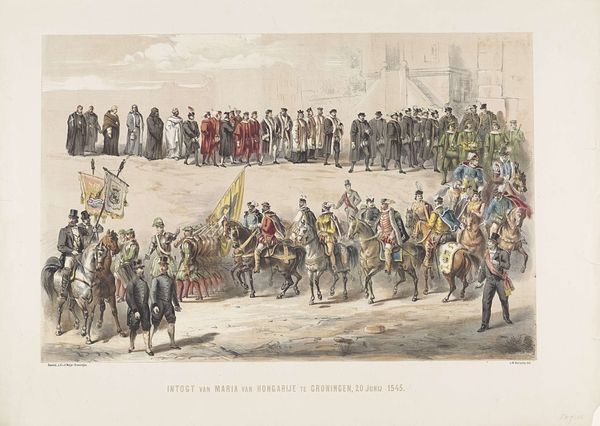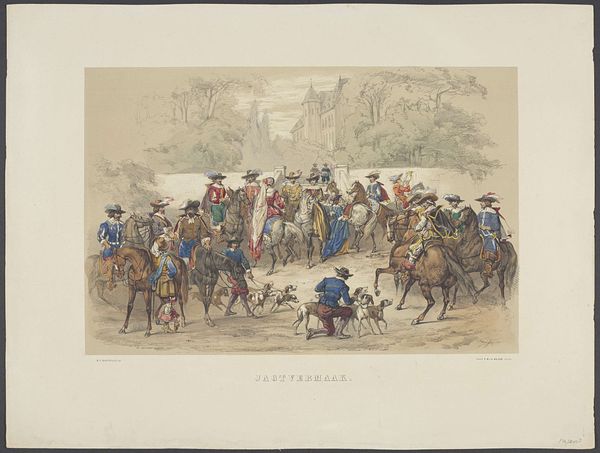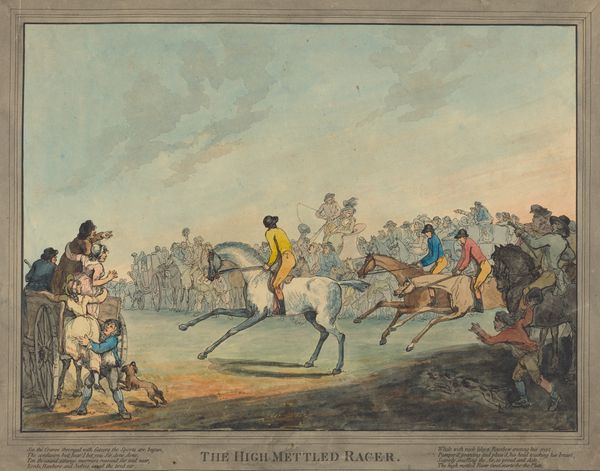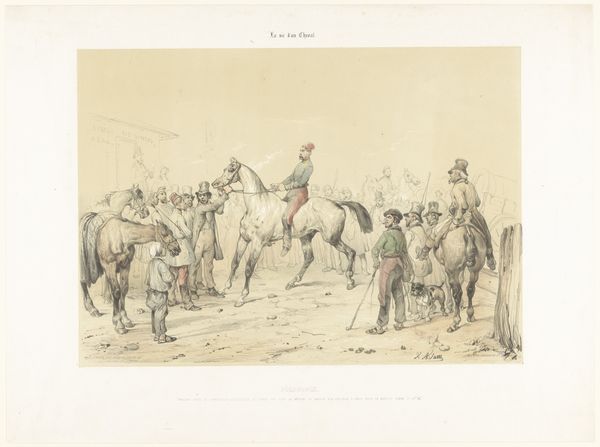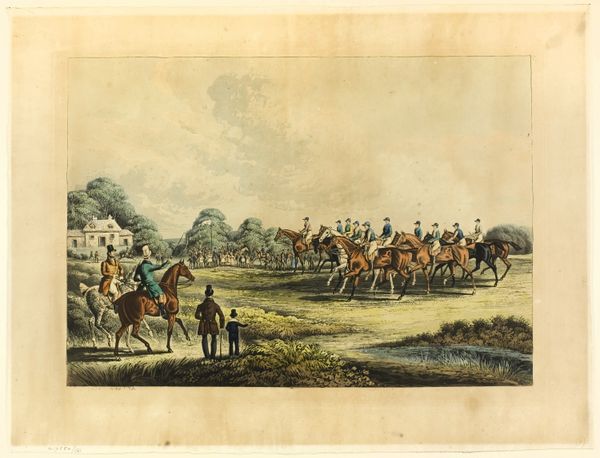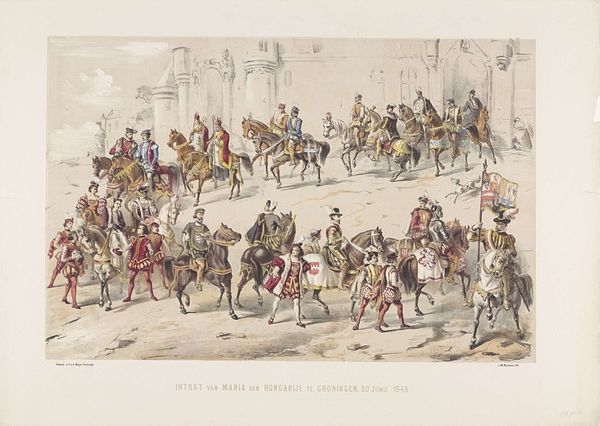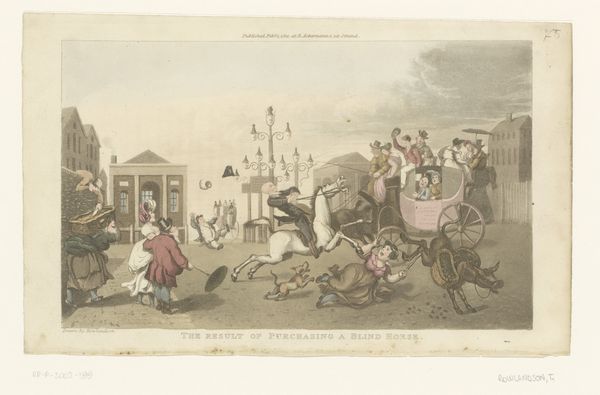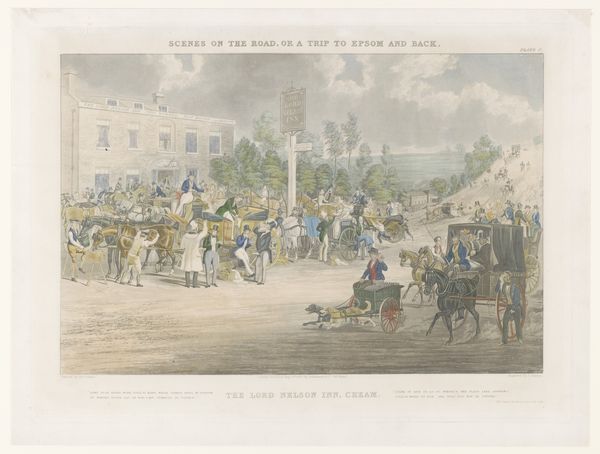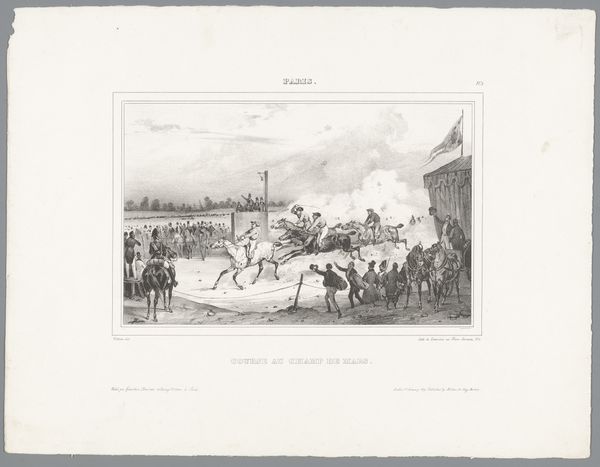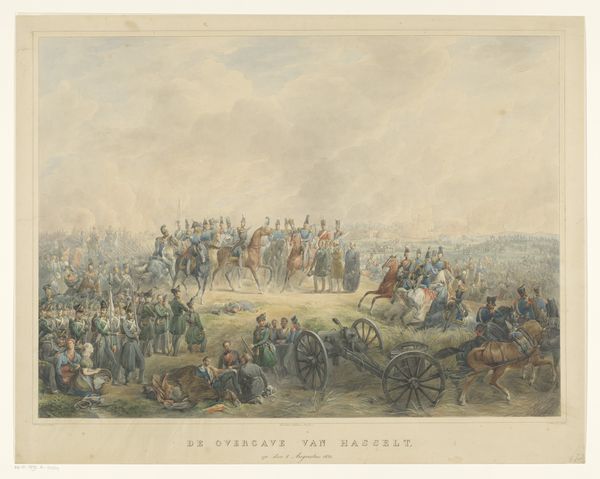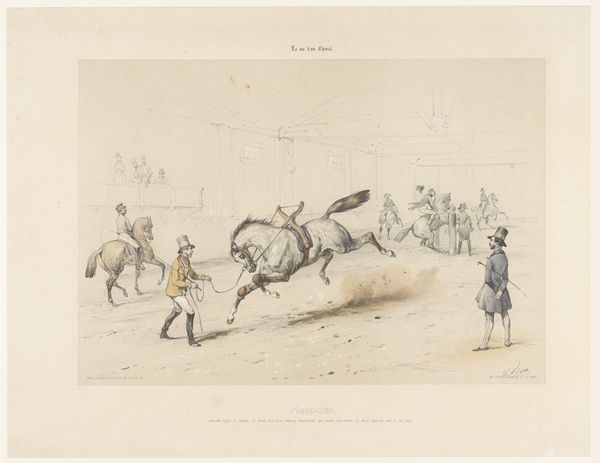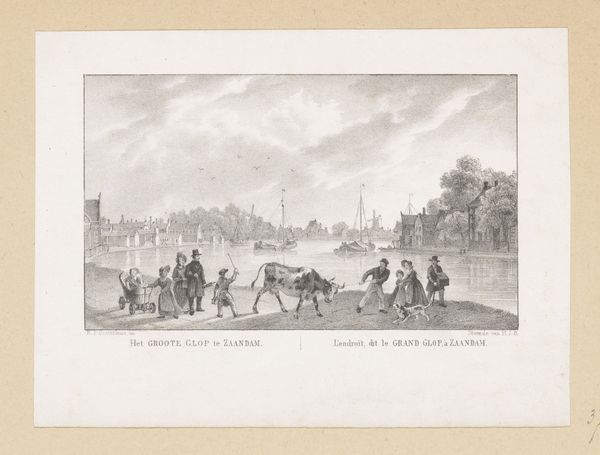
print, engraving
#
16_19th-century
# print
#
cityscape
#
watercolour illustration
#
genre-painting
#
history-painting
#
engraving
#
watercolor
Dimensions: height 620 mm, width 870 mm
Copyright: Rijks Museum: Open Domain
This anonymous image, "Groningse maskerade (derde groep)", was made in 1864. It depicts the entrance of Maria of Hungary into Groningen in 1545. Here, we see not just a historical event but also the way historical memory is constructed. The artist, working nearly three centuries later, was likely reflecting on the past through the lens of 19th-century nationalism and romanticism. The attire, the noble figures on horseback, the architectural backdrop—all contribute to a carefully staged tableau. This wasn't just about historical accuracy; it was about creating a narrative of power, identity, and spectacle. The choice to focus on Maria's entrance is interesting. As a woman in power during a tumultuous time in Europe, her figure invites questions about gender, authority, and representation. The image hints at how gender roles were performed and perceived in both the 16th and 19th centuries. It prompts us to consider how these historical pageants served to solidify social hierarchies and political legitimacy.
Comments
No comments
Be the first to comment and join the conversation on the ultimate creative platform.
